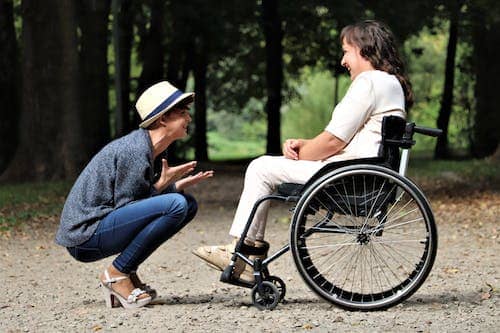Getting Physically Active For Disabled People Has Many Menefits

Getting physically active for disabled people has many benefits, including reduced risk of falls, increased self-esteem and quality of life, and enhanced self-efficacy. It is important to remember that physical activity can be a very simple and fun activity and that everyone can benefit from it. Looking for the best disability service in Melbourne?
Increased quality of life
Increasing the quality of life through physical activity for disabled people has been a focus of recent research. Exercise has been shown to improve mental health, reduce the risk of certain cancers, and help with independence.
Research also shows that people with disabilities are more likely to develop diabetes, cardiovascular disease, or cancer. In addition, individuals with disabilities are at higher risk of experiencing a stroke. In the United States, adults with disabilities are more likely to have diabetes and heart disease. Physical activity can also improve strength, endurance, and function.
Physical activity has also been found to reduce depression and reduce the risk of early death. The World Health Organization has issued guidelines to promote physical activity among people with disabilities. These guidelines are based on the 2030 Agenda of Sustainable Development and incorporate equity and human rights. The guidelines recommend at least 2.5 hours of aerobic physical activity each week.
In 2015, the United Nations launched “Transforming Our World 2030 Agenda for Sustainable Development”. This agenda prioritizes inclusion of disabled people. The 2030 Agenda calls for the development of a comprehensive plan for inclusion that will support no one left behind. These guidelines incorporate the principles of equity and human rights and provide clear direction for physical activity for disable people. These guidelines include the 2030 Agenda and Sustainable Development Goals.
The study used a cross-sectional design to examine the relationship between physical activity and QOL. It measured the relationship using self-report measures of disability and physical activity. The study revealed that QOL and physical activities had a non-linear relationship. It was indirect with the indirect pathway accounting approximately one-third of all effects. The indirect pathway through QOCS was much more influential than that through attitude towards disability. The indirect pathway through QOCS contributed to 70% of the indirect effect from severity to QoL.
People with disabilities can improve their quality of life by engaging in physical activity. This can reduce the burden of disease, improve their health, and reduce discrimination. New research is needed to expand this evidence base.
Higher self-esteem
Several studies have shown that physical activity can improve self-esteem. Many organisations recognize the connection between sport and self-esteem. The effects of physical activity on self-esteem may be mediated by several factors, such as self-efficacy, physical ability, and self-image. Using an exercise intervention can be an effective way to improve self-esteem in young people with physical disabilities.
The quality of life for disabled people is dependent on self-esteem. It can also help prevent the development of behavioural issues. A positive self-image can help to unlock new opportunities and friendships. Studies found that self-esteem measures were comparable across all studies.






